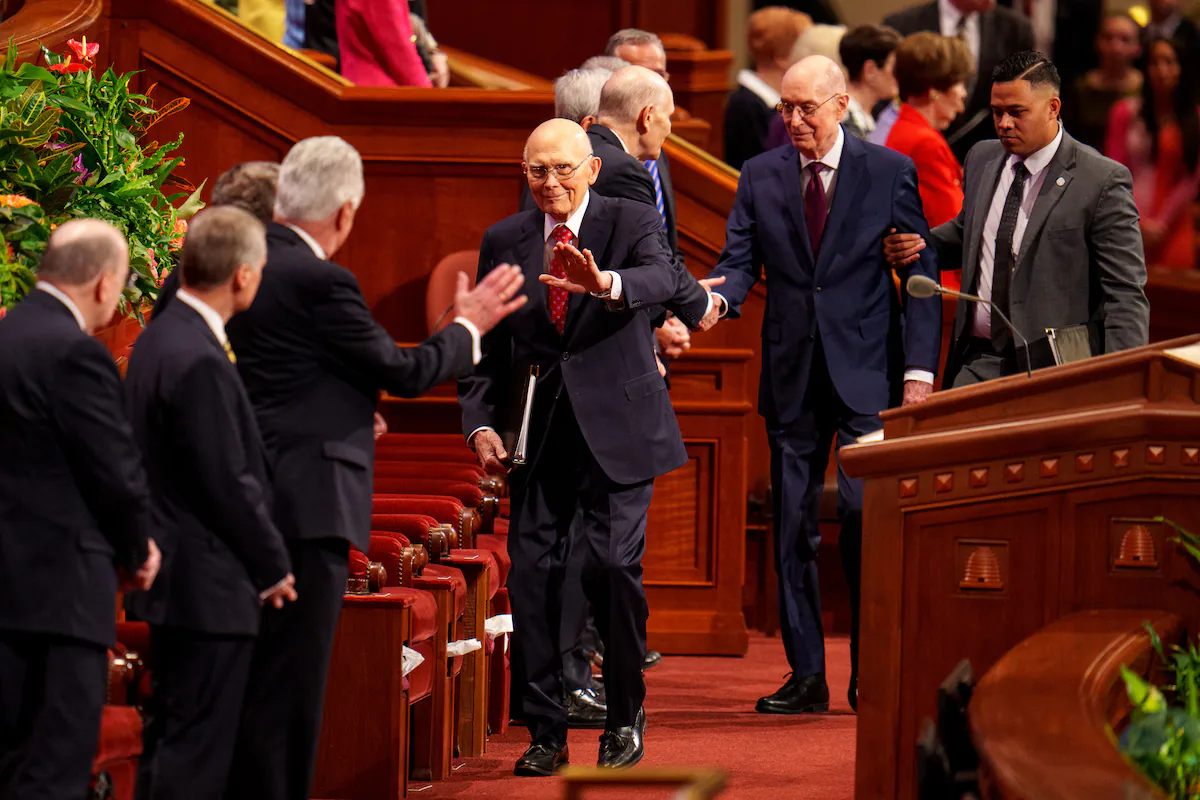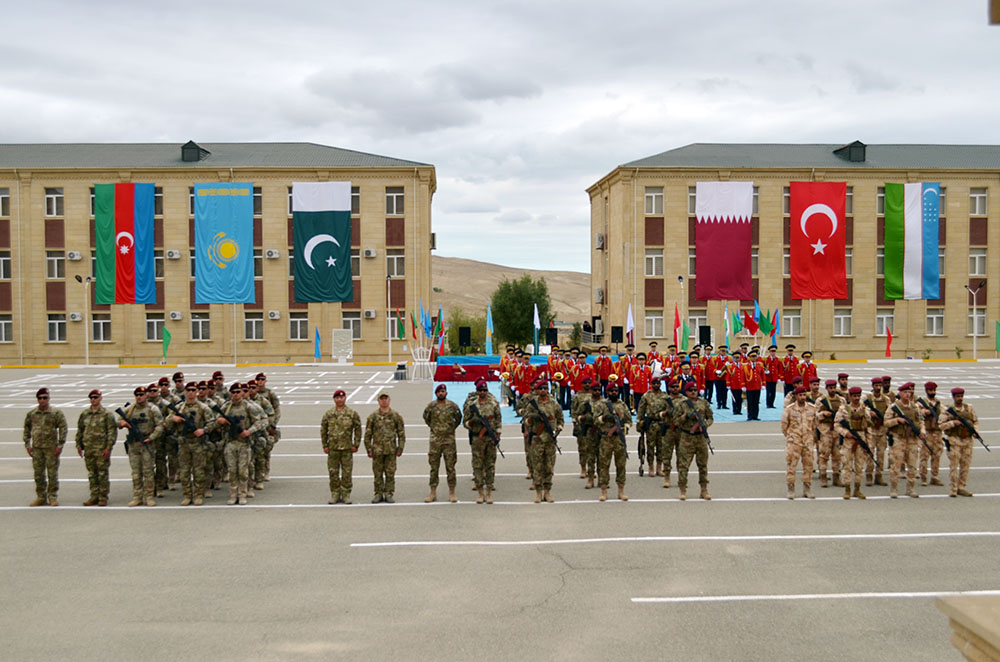
Members of The Church of Jesus Christ of Latter-day Saints often boast that prophetic succession within their faith is smooth, seamless and orderly.
No posturing. No politicking. No voting. No white smoke.
It is a little trickier this time, given the proximity of President Russell M. Nelson’s Sept. 27 death to this weekend’s General Conference.
Health questions also surround which man – or men — could be elevated to the church’s governing, three-person First Presidency.
Senior apostle Dallin H. Oaks, the 93-year-old presumed successor as the faith’s 18th president, faces a quandary as he navigates the system, which could include a small break from decades-old tradition, a tough choice for the former attorney and state Supreme Court justice for whom precedent is crucial.
In the 20th and 21st centuries, no new president was announced before the funeral of the previous president. At the same time, no General Conference was conducted during those decades without an intact presidency.
Nelson’s funeral is slated for next Tuesday, but the global Latter-day Saint gathering is set to begin Saturday, and the church has already announced it will continue as planned.
The church is, however, conducting a livestreamed tribute to Nelson on Wednesday, three days before conference.
So, will Oaks reorganize his presidency before the Saturday and Sunday sessions or delay that announcement until later next week?
“My guess is that they’ll wait,” says historian Matthew Bowman, chair of Mormon studies at Claremont Graduate University in Southern California, “in part because Oaks seems deliberate, the sort of leader who doesn’t want to be rushed in these types of decisions.”
Surgeons, like Nelson was in his professional career, “are accustomed to being in charge and making decisions on their own,” Bowman says. “Lawyers consult others and do research before deciding.”
His instinct, the historian says, “is that Oaks will take it slow, do consultations, and will not want to be pushed into making a choice.”
No matter which way Oaks goes, “it won’t be a wrong decision,” says Kathleen Flake, emeritus Bushman professor of Mormon studies at the University of Virginia.
Together, the top 14 apostles (two from the former First Presidency and rest of the Quorum of the Twelve) “need to adequately counsel together to see the inspiration they need to move to a decision,” she says. “If they can do that before Sunday, great, but there is no necessity to act.”
Even without a reconstituted First Presidency, Oaks resides over the church as president of the Quorum of the Twelve Apostles.
General Conference attendees “will see continuity in the offices,” Flake says. “They’ll have an opportunity to appreciate the role of the quorum in the church.”
Choosing counselors
For most of the past 100 years, the men who serve the Latter-day Saint president as counselors have come from the ranks of the church’s quorums, mostly apostles and frequently the next two in the line of succession.
In recent years, though, some presidents have selected counselors who were further down in apostle seniority — President Gordon B. Hinckley chose Henry B. Eyring and Thomas S. Monson chose Dieter Uchtdorf as counselors.
Nelson replaced Uchtdorf with Oaks, who was next in line to lead the worldwide faith of 17.5 million members, saying he needed experience in the First Presidency for the future.
What, then, does that suggest about whom Oaks might pick?
Apostle Jeffrey R. Holland was serving as acting president of the Quorum of the Twelve, making him the most senior after Oaks.
“I would be surprised if Holland is not in the First Presidency by virtue of him being next in line,” says Patrick Mason, chair of Mormon history and culture at Utah State University. “The two of them work well together, they have a lot of overlap (both were educators and both were presidents of Brigham Young University). They’ve been there for a long time together.”
Beyond that, Mason says, it would be a “matter of training Holland.”
Still, the 84-year-old has had plenty of health problems, including kidney disease.
There also is a question about whether Oaks would retain Eyring in the First Presidency, given his age (92) and seemingly frail physical condition.
“I would be very surprised if [Oaks chooses both] Holland and Eyring,” Mason says. “Both are in bad health and can’t travel.”
If he were deciding, the scholar says, he would pick Holland and then return the 84-year-old Uchtdorf, who ranks just after Eyring in the seniority tally, to the presidency.
Benjamin Park, history professor at Sam Houston State University in Texas, also sees logic in Oaks choosing Holland.
One of the reasons Nelson gave for bringing Oaks into the First Presidency was that “he was going to be the next prophet and should have experience within [it],” Park says on The Salt Lake Tribune’s “Mormon Land” podcast this week. “Maybe that was Nelson kind of admitting that he felt that he was deprived of that preparation himself.”
It’s also possible that Oaks decides the presidency needs “a fresh perspective,” Park says, from someone “who’s going to be in church leadership for a long time and has a chance to reshape the church and maybe match the ideological position of the current leader. Maybe that’s [73-year-old apostle] David A Bednar, who is quite young compared to others in the line of seniority. Maybe Oaks sees that Bednar is going to be the future of the church.”
Creating a succession system
The church’s succession plan in place now hasn’t always been clear.
When church founder Joseph Smith was killed in 1844, “there were a variety of different claimants to that mantle, with each claiming scripture and Joseph’s teachings to justify it,” Park says. The largest number of members ended up following Brigham Young out West. Still, the First Presidency wasn’t reconstructed for another three years.
“When Brigham Young died in 1877, it was three years before they reconstituted the First Presidency and John Taylor took control. And then, when John Taylor died in 1887, it was another two years until Wilford Woodruff became prophet,” the scholar says. When Woodruff was elevated to the presidency, “there were some within the Quorum of the Twelve who were openly asking, ‘Are we sure it has to go to Wilford Woodruff?’ Are we sure that’s the right mechanism? What if we get someone younger and more energetic?’ In the end, Woodruff was able to bring them around and embrace the succession plan.”
It’s been this way ever since, but could this change?
“Theoretically, yes, functionally, probably not,” Park says. “It would take a lot of changing over the years, a softening of certain positions.”
Still, a bedrock belief in Mormonism is that it’s “a living church that follows prophetic leadership,” he says, “that at any point, the prophet can declare a shift, and it [would] likely be sustained.”
After all, members have seen “a lot of traditions change under Nelson,” Flake says. “Tradition is just tradition.”



